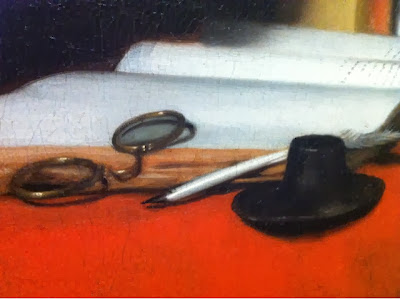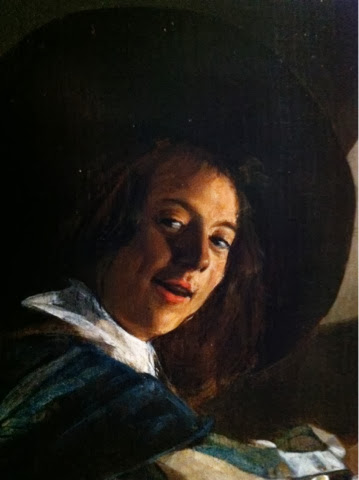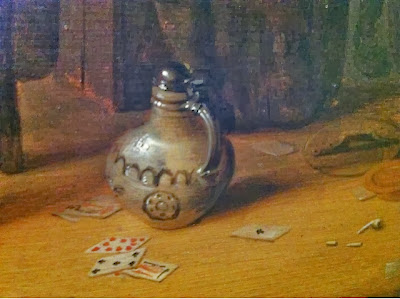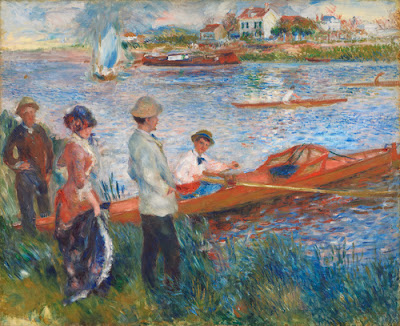Well, it has been a great pleasure and privilege to see such a wonderful group of exhibitions this fall. My personal favorites would have to be the ICA Boston's Amy Sillman: one lump or two and MIT Museum's 5000 Moving Parts, with WAM's [remastered] close behind. The spring of 2014 has some exciting and varied offerings for See It All. Exhibitions featuring painting, installation, textiles, drawings and rare books and manuscripts will all be opening in and around the Hub.
The Shows
Fans of quilts and textiles can continue their exposure to amazing work started at New England Quilt Museum's The Roots of Modern Quilting by attending their follow-up show Quilting Japan, opening in mid-January. Then, in April, the MFA mounts Quilts and Color: The Pilgrim/Roy Collection which should present a diverse and masterful array of examples of the quilting art.
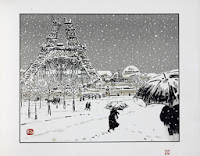 Two very interesting examinations of the act and meaning of collecting can be seen by visiting the Currier Museum's collaboration with Andrew Witkin, Exploring the Currier Inside and Out: Andrew Witkin, Among Others. This meditation on collecting and collections can be followed up in April with the Boston Athenaeum's second installment of their Collecting for a New Century, featuring rare books and manuscripts (a personal favorite of VO.)
Two very interesting examinations of the act and meaning of collecting can be seen by visiting the Currier Museum's collaboration with Andrew Witkin, Exploring the Currier Inside and Out: Andrew Witkin, Among Others. This meditation on collecting and collections can be followed up in April with the Boston Athenaeum's second installment of their Collecting for a New Century, featuring rare books and manuscripts (a personal favorite of VO.) Another favorite medium of VO is drawing, which will be the subject of a show opening at the Portland Museum of Art in late January. Fine Lines: American Drawings from the Brooklyn Museum, will give New England audiences a rare chance to view these delicate works.
Another favorite medium of VO is drawing, which will be the subject of a show opening at the Portland Museum of Art in late January. Fine Lines: American Drawings from the Brooklyn Museum, will give New England audiences a rare chance to view these delicate works. The ICA Boston will provide a dramatic shift from their Amy Sillman show by turning their West Galleries over to unique installation and sound artist Nick Cave, an exhibition that's bound to dazzle.
The ICA Boston will provide a dramatic shift from their Amy Sillman show by turning their West Galleries over to unique installation and sound artist Nick Cave, an exhibition that's bound to dazzle.A deep and stimulating glimpse into a painter's love of place will be featured in the Addison Gallery of American Art's An American in London: Whistler and the Thames. The examination of an artist's treatment of a paricular subject is also the theme of VO's most anticipated show of the spring, PEM's Turner and the Sea opening in May. This show features representations of the sea in the work of England's renowned 19th century painter J.M.W. Turner.
See It All's Most Anticipated Show of Early-2014
PEM/Turner and the Sea opening in May
 Enthusiasts for all things nautical can sate their appetite further at the MIT Museum's The Herreshoff Legacy about America's most famous yacht designer (and MIT's own,) Nathaniel G. Herreshoff.
Enthusiasts for all things nautical can sate their appetite further at the MIT Museum's The Herreshoff Legacy about America's most famous yacht designer (and MIT's own,) Nathaniel G. Herreshoff.
See It Before It Closes
Closing Dec. 31, Higgins Armory Museum
Closing Jan. 5, ICA Boston/Amy Sillman
Closing Jan. 20, MFA/John Singer Sargent Watercolors
Closing Jan. 20, Gardner Museum/Inscrutable Eye
Closing Feb. 17, PEM/Impressionists on the Water
Closing March 23, Concord Museum/The Best Workman in the Shop
Closing March 30, MIT Museum/Stanley Greenberg: Time Machines
Spring Preview Links:
- Jan 11, Currier Museum/Exploring the Currier Inside and Out: Andrew Witkin, Among Others http://www.portlandmuseum.org/Content/8141.shtml
- Jan 16, New England Quilt Museum/Quilt Japan http://www.nequiltmuseum.org/upcoming-exhibitions.html
- Jan 30, Portland Museum of Art/Fine Lines http://www.portlandmuseum.org/Content/8141.shtml
- Feb 1, Addison Gallery of American Art/An American in London: Whistler and the Thames http://www.andover.edu/Museums/Addison/Exhibitions/WhistlerThames/Pages/default.aspx
- Feb 5, ICA Boston/ Nick Cave http://www.icaboston.org/exhibitions/exhibit/nick-cave/
- March, WAM/Knights! http://www.worcesterart.org/Director/higgins-collection/
- April 6, MFA/Quilts and Color http://www.mfa.org/exhibitions/quilts-and-color
- April, Boston Athenaeum/Collecting for a New Century http://www.bostonathenaeum.org/node/153
- Spring, MIT Museum/The Herreshoff Legacy http://herreshoff-legacy.mit.edu/
Most looking forward to:
- May 31, PEM/Turner & the Sea http://www.pem.org/exhibitions/163-turner_the_sea

















